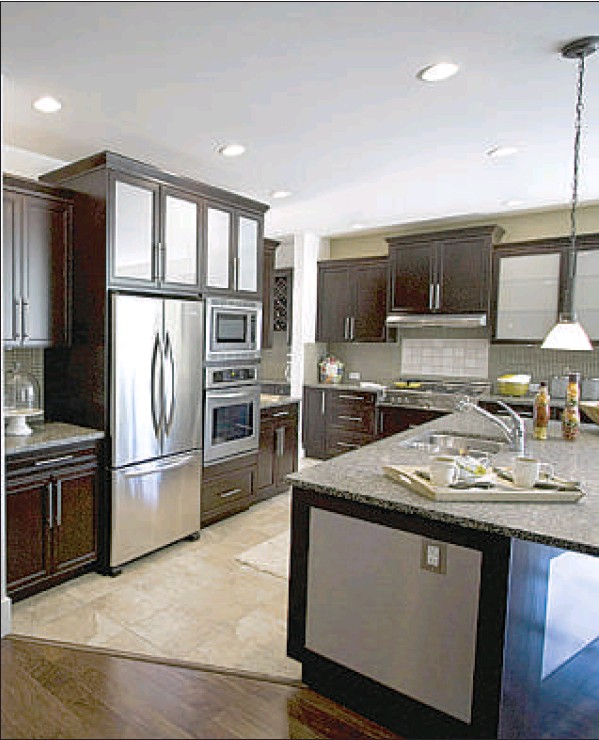Visitors hunt for decorating tips
PEDRO ARRAIS
Sun


Danielle Campagne in the Breakwater show home on Vancouver Island.
Show homes for newhome projects are finished and furnished to sell homes. But they also help sell paint and furniture and accessories, in their second-purpose role of exemplars of interior design and decoration.
Deborah Patterson, inhouse designer for the Citta Group in Victoria, says there are challenges to using a show home for inspiration: Visitors seeking not a new home, but a new look have to be careful about borrowing elements from a show home because a design that looks fabulous in one setting might not necessarily work in another.
“In a show home, all the things are bought with an eye toward matching with each other,” she says. “Most people will invariably have personal items collected over years they need to fit in.”
Patterson is quick to point out that decorators can help clients incorporate treasured furniture pieces and mementos into a modern setting. Developers often offer a choice of themes and looks for their homes. The t wo most common are the traditional and the contemporary looks.
Some designers eschew the picture-perfect look for one that has more character.
“We didn’t want our show home to feel like a show home,” says Danielle Campagne, owner of IC Interior Design Group and co-designer for the Breakwater.
The James Bay project’s waterfront luxury townhomes have an upscale, urban-chic feel, but the rooms are lavished with antiques and original art instead of store-bought accessories.
“We felt a more eclectic mix-and-match would give the unit more chemistry — a lived-in feel. That’s why we chose one-of-a-kind art pieces… .”
Show home decor usually reflects the community in which the house is built. This gives out-of-town buyers a good touchstone as far as local tastes, designers say. For the Bishop’s Green new-home project on Saltspring Island, Campagne chose to give the show home’s interior a more whimsical look, with lambs in the kitchen and more natural, comfortable materials.
“It’s what’s appropriate for the target market,” she says. “There is a big arts community on Saltspring, so we put in an unfinished picture on an easel on an upper landing.”
While show homes inevitably exemplify a clever use of space and innovative design, they also share a common theme — comfort. All the interiors are warm places to relax after a day at work.
“I want people to feel as if they could kick back and put their feet up,” says Glenda Castelsky, principal of Details Interiors of Qualicum Beach. She created the interior design for Eaglewood at Qualicum Beach development. Because the target client would move from a big city, she designed the show home as a retreat, with lots of slate and wood interposed with warm fabrics. “I wanted the decor to be realistic and something that tells the buyer that they can actually live there.”
While looky-loos at open houses go away with ideas for their own homes, it takes more than buying the same furnishings and using the same colour palette to recreate what a designer or decorator has designed.
“It’s more of a feeling than physical attributes,” says John Larson, owner of C.A. Design, responsible for the building design of Eaglewood. “It’s as much geometry as the physical materials. It’s the ability to create harmony from a collection of pieces — and not everybody has that skill.”

